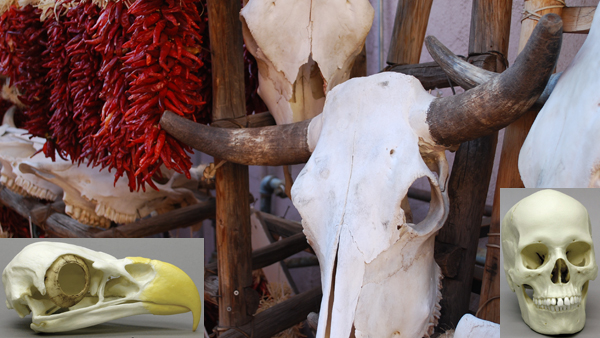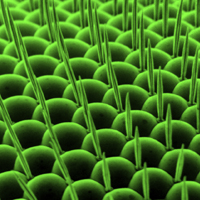How are Animal Eyes Different from Human Eyes?
There are many ways that the eyes of various animals are different from human eyes. They are different in size, shape, construction, light and color sensitivity, purpose and function. Just a few examples of these differences are mentioned here.
Color: We have color vision that is best described by the number three. Colors we se can be bright or dark, of different hues (e.g., red, yellow, green, blue, purple, etc.), and of different vividness (how much of the hue, or how different from neutral colors like white, black, or gray). Very few other animals have similar color vision. In fact only a few types of monkeys and fish seem to see color like we do. Some birds, insects, and shrimp can actually see more types of color variation than we can. Most animals cannot see color nearly as well as us. They see shades of gray and maybe on other type of change in hue; much like someone with color-blindness would. Cats, dogs, and other mammals fall into this category. But even though some of them can't see color well, they can see much better than us at night.
Purpose: Some animals, like cats, are nocturnal and their eyes are designed to be much more sensitive to light than ours. That helps them see when it is too dark for us to see much at all. Our color vision lets us do things like identify good food and find it to feed ourselves. Other animals need to see behind them in case a predator is trying to sneak up on them eat them. Others have overlapping vision in the two eyes to better be able to locate objects in the world. That's very important for animals that move quickly, or fly through the world.
Construction: Our eyes are made much like a camera with a lens, a pupil, and light-sensing cells in the back. Those eyes are great for land mammals and fish, but they are too large and complicated for other creatures, like insects, that have compound eyes. Compound eyes have a whole bunch of individual lenses focussed on different parts of the world. Each of those segments has a few light receptors, so they also don't get as much information about the world. Even stranger, some creatures, like lobsters, don't have lenses at all, but have mirrors to collect the light underwater.
Animal vision is endlessly fascinating and there is much more to learn about each of your favorite animals.
![]()
Explore the NEXT TOPIC at this level.
Explore the NEXT LEVEL on this topic.
Ever wonder ... Why can I see well outside when my mom (who's inside) thinks it's too dark to be out?
Updated: Apr. 19, 2011

